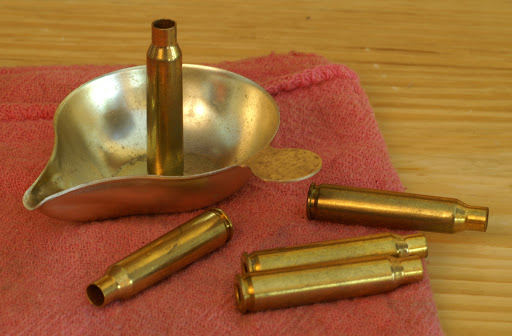And here’s hoping that, if you try sometimes, you get what you need. Sorry Mick. READ MORE
Glen Zediker
Yet one mo time: the topic for Reloaders Corner comes from recent letters on a topic, and this time it’s brass. Specifically, some were asking me about this and that such and such brands of brass that I’d had no direct experience with. The reason for the question was because my long-standing and well-known in-print recommendations had, for these folks, just not been possible to find. They were, by the way, looking for “good” brass, which can mean different things, but mostly new cases that were going to be consistent and had nothing that wouldn’t recommend them, if that made sense. If it didn’t, it means that the cases weren’t unusually hard or soft, or expensive, or, generally, exhibiting low or quirky quality.
These were competitive shooters, NRA High Power Rifle, by they way.
Anyone who’s read much from me on this topic knows I’m partial to American-made cases, WW in particular, and also (now) Nosler. Nosler isn’t cheap. You would also know that I am not a fan of European brands. I have used and continue to use a good deal of Lapua because I have a good deal of it, but it tends to be virtually perfect in dimension but soft in composition. And, gas gun or not, I do not like soft brass.
For this next to be as helpful as I’d hope it might be, the circumstance is this: We are going to try a few before we commit. We’re first going to buy a box before we get a case.
So after opening a container of new brass, how do you know “what you’ve got”? Have to find some way to measure it, then measure it, and start quantifying its quality or suitability. There are a few different checks myself and others make that provide numbers we can use to represent consistency. For the most part, and this will likely get the most support in agreement from others reading this now, case wall thickness consistency might well trump other checks that can be made. Of course (of course) there are tools that make this job — measuring wall thickness at 4 points around a case neck — easier and faster. Related but not exactly the same thing is running the new cases through a concentricity fixture (a “spinner”) that will show how much runout a case neck has. To make that truly reliably viable, though, all the cases much first be sized to round out the case neck cyclinder. That might not be such a chore, though, because in fact all those cases are going to need sized before they can be used. Otherwise, and this takes only a quick look to know, new case mouths are usually bent up and not nearly ready to accept a bullet.
There’s another way. Weigh them! Weigh them all. After a few tries and a few notes, you’ll get an idea of what represents the higher, lower weight range. Moving them into piles, a pattern, I guess we could call it, shows up. As with any segregation, the tolerance you’re setting determines on how many piles, but I suggest and try to keep it to three. Separation increments that are realistic and influential for case weight segregation varies on the physical size of the case and, of course, the tickiness of the operator. Again, though, if you weigh 100 cases and you have your numbers and your piles, you’ll start to see how both your criteria and your test pieces are relating. If your piles have cases that are under 1.0 grain difference each, meaning less than 3.0 grains total weight variance, that’s good! Really good. There are other surfaces (case rim for instance) where a little more or less material here and there contribute to the weight.

Weight is not (not nearly) an indicator of case wall thickness consistency. Well, or if it is, that’s sho not what the scale is directly showing you. It’s also not a direct indication of case volume, or of anything else for that matter! It is only showing a weight on each case. However! Over almost a half century messing with all this, I can tell you that — for some reason — it does without a doubt matter! It may only be some sort of clue to the “overall” quality of manufacture, I honestly don’t know.
I suggest it as an alternative to more “direct” means to gauge case quality just because everyone has a scale and initial weight readings are fairly fast and decidedly easy to take.
Now. Read just a little on this on the interweb and you’ll see weight segregation is most often discounted heavily as a viable criteria. As with much of what else you’ll read on the interweb it tends to be posted by folks who are long on opinion and short on resume. Right. They know it all but don’t actually go out and win anything.

One last, speaking of folks with impressive resumes, I know a good number of shooters on the U.S. Palma Team. These folks are all big into weight segregation. Since “real” Palma is fired with drawn ammo, the proven best way to find out which rounds in a box are going to shoot the closest together is simply to weigh all the loaded rounds and separate them by weight. That’s proven to do better than any other means for measure. It honestly does work for cases too.
The preceding is a adapted from information contained in Glen’s newest book America’s Gun: The Practical AR15. Available at Midsouth Shooters Supply. Visit ZedikerPublishing.com for more information on the book itself, and also free article downloads.









